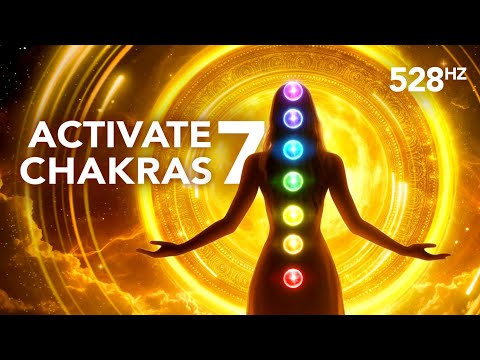You’re carrying the weight of the world on your shoulders, but Progressive Muscle Relaxation (PMR) can help lighten the load. When everyday stress tightens its grip, you can turn to PMR to ease the tension.
Progressive Muscle Relaxation can be used in various situations, such as to reduce stress and anxiety, promote relaxation and sleep, manage pain, and improve overall well-being. It is a technique that involves tensing and then relaxing different muscle groups in the body to promote a sense of calm and release tension. It can be used at any time when you feel the need to relax and unwind.
Before bed, it’s your ally against insomnia, gently coaxing your body into a state of restfulness. If anxiety’s shadows loom, PMR serves as a beacon of calm, helping you regain control and peace of mind.
Even chronic pain, which can erode your comfort and joy, isn’t beyond PMR’s soothing touch. You’ll find it invaluable when preparing for life’s stressful events or recovering from intense physical exertion.
In essence, PMR is a safe haven for your mental and physical well-being, ready whenever you need to find your balance and serenity.
Key Takeaways
- Progressive Muscle Relaxation (PMR) can be used daily to lower stress levels and promote a sense of calm.
- PMR is beneficial for improving sleep quality and can be practiced before bed to release stress and promote relaxation.
- PMR can be used during moments of heightened anxiety to ease symptoms and manage anxiety-related physical manifestations.
- Incorporating PMR into meditation routines deepens relaxation and focus, making it a useful technique for individuals with chronic pain.
Understanding PMR Basics
Progressive muscle relaxation, or PMR, is a technique you can master to alleviate stress and improve your overall well-being. Developed by Edmund Jacobson in the early 20th century, this relaxation technique is a safe and effective way to calm your mind by systematically relaxing your body. You’ll learn to notice tension in your muscles and then release it, which can help you manage anxiety, sleep better, and even address chronic pain with consistent practice.
Just 10-20 minutes a day can teach you to recognize and reduce stress-induced muscle tension. As you become more familiar with PMR, you’ll find it easier to trigger the relaxation response, enhancing your body awareness and deepening the sense of tranquility.
Embrace this method to create a peaceful sanctuary within yourself.
Easing Daily Stress
You can integrate progressive muscle relaxation into your daily routine to effectively lower stress levels and promote a sense of calm throughout your day. This technique is a gentle yet powerful ally in easing daily stress. It can help you manage stress and anxiety by teaching your body the contrasts between tension and relaxation.
Here are some ways to use PMR:
- Before or after work to transition between professional and personal time
- During breaks to rejuvenate and clear your mind
- After physical activity to ease muscle tension
- While experiencing stress-induced physical symptoms, like headaches
- Before sleep to improve sleep quality and reduce insomnia
Pre-Sleep Relaxation
Harnessing tranquility through progressive muscle relaxation at bedtime can significantly improve your sleep quality and expedite the transition into a restful slumber.
If you’ve experienced nights where stress and tension hinder your ability to fall asleep, pre-sleep relaxation techniques like this can be a sanctuary for your restless mind and body.
As you practice progressive muscle relaxation, you’ll notice a feeling of relaxation cascading through each muscle group, releasing the day’s stress with every breath.
This practice not only prepares you for sleep but also equips you with a sense of calm that nurtures your sleep throughout the night.
It’s a safe, self-guided method that, with consistent use, can be your ally against sleep disturbances and a cornerstone for your nightly routine.
Managing Anxiety Symptoms
During moments of heightened anxiety, you can employ progressive muscle relaxation to ease symptoms like racing thoughts and rapid heartbeat. This powerful technique aids in managing anxiety symptoms by helping you focus on releasing the muscle tension that often accompanies stress.
Here are five steps to effectively reduce symptoms:
- Find a quiet, comfortable space where you won’t be disturbed.
- Take slow, deep breaths to initiate a state of calm.
- Systematically tense and then relax each muscle group, starting from your toes and moving upward.
- Notice the contrast between tension and relaxation, anchoring the sensation of calm.
- Practice regularly to enhance your ability to manage anxiety and its physical manifestations.
Enhancing Meditation Practices
Incorporating progressive muscle relaxation into your meditation routine can significantly deepen your relaxation and focus. PMR fosters physical relaxation, which is a cornerstone for effective meditation practices. It’s a gentle, safe technique that can help you become more in tune with your body’s needs and responses.
By methodically tensing and releasing different muscle groups, you create a stark contrast between tension and calm. This heightened awareness can reduce anxiety and foster a tranquil mind, making your meditation sessions even more profound.
Coping With Chronic Pain
If you’re grappling with chronic pain, incorporating Progressive Muscle Relaxation (PMR) into your daily routine can be a transformative pain management technique.
By methodically tensing and relaxing muscle groups, PMR allows you to gain a sense of control over your discomfort and reduce overall stress levels.
It’s a simple, yet powerful practice that you can use every day to help mitigate the persistent pain that often intrudes on your quality of life.
Pain Management Technique
You can manage your chronic pain more effectively by incorporating progressive muscle relaxation into your daily routine. This technique, known for its power to reduce muscle tension and promote relaxation, can be a safe haven in your battle against pain.
Remember, consistency is key to harnessing the full benefits of this pain management technique. Here’s how you can integrate this practice into your life:
- Dedicate a quiet, comfortable space for your relaxation sessions.
- Schedule a regular time each day for PMR to enhance its effectiveness.
- Combine PMR with deep breathing exercises to maximize relaxation.
- Gradually tense and relax each muscle group, noticing the release of tension.
- Use guided recordings or apps if you find it difficult to practice on your own.
Daily Routine Integration
Amidst your daily activities, you can weave progressive muscle relaxation (PMR) into your routine to effectively mitigate chronic pain.
This daily routine integration doesn’t have to disrupt your schedule. In fact, setting aside time twice a day to practice PMR can become a sanctuary for relief.
Morning and evening sessions allow you to relax each muscle group, easing tension that accumulates from daily stresses and activity.
As you gently tense and then release each muscle, imagine the pain dissipating with each exhale. This method not only helps manage your pain but also enhances your awareness of bodily stress.
Over time, you’ll likely notice an improvement in your pain levels and an overall sense of calm.
Preparing for Stressful Events
As you anticipate a stressful event, you may feel a rush of nerves and tension building up in your body. Progressive Muscle Relaxation offers you a practical technique to manage these pre-performance jitters effectively.
Stress Event Anticipation
Anticipating a stressful event, you’ll find Progressive Muscle Relaxation an effective tool to ease pre-event tension and enhance mental preparedness. This technique can be your ally in the need to relax and release the tension that builds up as you think about what’s ahead.
Here’s how you can benefit:
- Diminish signs of stress: Recognize and alleviate bodily tension.
- Improve sleep: Manage stress-related sleep disturbances the night before.
- Enhance focus: Clear your mind for better concentration on tasks.
- Increase resilience: Prepare your body and mind to handle stress more effectively.
- Cultivate calmness: Develop a sense of tranquility to carry into the event.
Pre-Performance Nerve Management
Before stepping into the spotlight, you can use progressive muscle relaxation as an effective strategy to manage your nerves and ensure you’re performing at your best. Pre-performance nerve management is crucial, and by focusing on tensing and relaxing different muscle groups, you can dissipate the tension that builds up before a big event.
This muscle relaxation technique not only soothes your body but also calms your mind, creating a sense of tranquility that can enhance your concentration and confidence. Remember, it’s about gentle, controlled tensing and relaxing – a methodical approach that signals safety to your body and mind.
With practice, you’ll find this becomes a trusted ritual, steadying your nerves and preparing you to face the challenge with poise and calmness.
Supporting Mental Health
Your mental health can significantly benefit from incorporating Progressive Muscle Relaxation into your daily routine. By supporting mental health through this technique, you can help reduce the overwhelming feelings that may arise from stress or anxiety. It’s a safe and gentle way to relax your body and mind.
Here’s how PMR can assist you:
- Alleviates Symptoms: PMR can lessen symptoms of depression and anxiety.
- Eases Tension: Regular practice helps reduce overall stress levels.
- Improves Sleep: It aids in managing stress-related sleep disturbances.
- Enhances Awareness: Boosts body awareness, contributing to well-being.
- Combines Well: PMR works effectively with other relaxation methods.
Using PMR is a step towards nurturing a resilient, calm, and healthier mental state.
Is Progressive Muscle Relaxation Suitable for Everyone?
Yes, progressive muscle relaxation techniques are suitable for almost everyone. It’s a simple and effective way to reduce stress and anxiety, improve sleep quality, and alleviate muscle tension. It’s especially beneficial for those with chronic pain, insomnia, or high levels of stress.
Recovering From Physical Activity
Experiencing muscle soreness after a workout, you’ll find progressive muscle relaxation an effective tool for easing discomfort and accelerating recovery. By gently tensing and releasing different muscle groups, you’re not only cultivating awareness of bodily sensations but also promoting relaxation that’s crucial when recovering from physical activity. This process encourages blood flow and may help to flush out lactic acid, which contributes to muscle soreness.
Here’s a simple table to guide you through a less intense session focusing on major muscle groups:
| Muscle Group | Tension (seconds) | Relaxation (seconds) |
|---|---|---|
| Calves | 5 | 30 |
| Thighs | 5 | 30 |
| Glutes | 5 | 30 |
| Abdominals | 5 | 30 |
| Shoulders and Neck | 5 | 30 |




